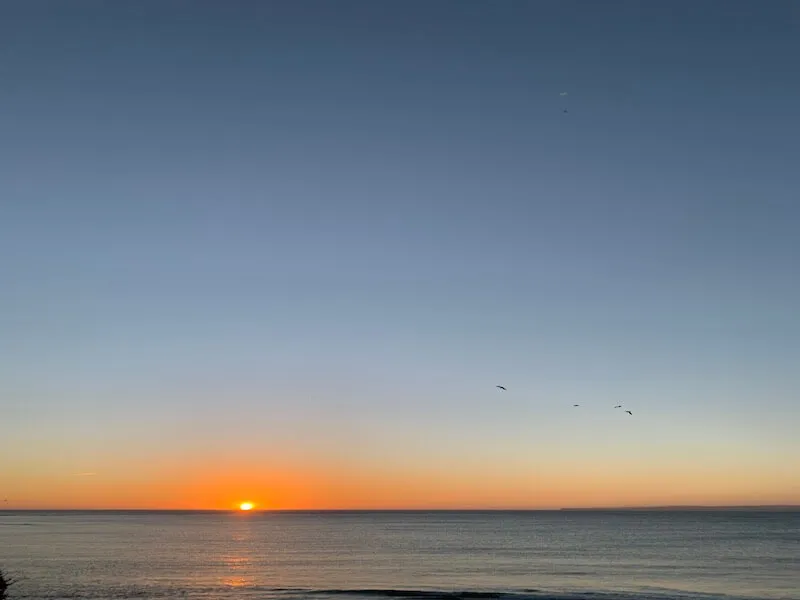The Green Flash

The Green Flash is often considered a myth (you may have heard about it in the Pirates of the Caribbean movie). But it is actually a fascinating optics phenomenon. You can see the green flash anywhere in the world, at sunrise and sunset, although more people tend to spot it at sunset. In order to see it, you need to have the sun setting over a very clear horizon. Most commonly people see it over water or over distant sand dunes. The green flash happens just as the sun disappears beneath the horizon – literally blink and you’ll miss it.
There are a few types of green flash:
- Inferior-mirage flash
- Mock-mirage flash
- Sub-duct flash
- Green ray
Understanding the flash
Light is made up of different colours, each with a different wavelength. Red has the longest and violet the shortest. The shorter the wavelength, the more the light is refracted (or bent). As the sun disappears below the horizon, the shorter wavelengths stay visible longer, as they can be bend further.
The longest, red wavelengths are the first to disappear. Blue and violet are the shortest so can be seen the longest. But as the sun sets, light must travel through more atmosphere to reach our eyes. Despite the blue and violet wavelengths being the last to disappear as the sun dips, we can’t see these. The wavelengths are too short and they are scattered by the atmosphere before the light can reach our eyes.
The green wavelength however, represents a happy medium. It is short enough to bend around the horizon, but it is also long enough to reach our eyes under the right conditions. This is why, for an instant, green is the last colour able to be seen.
Very occasionally there is even a blue flash, which happens if the air is really clear.
Image taken seconds before Scientell’s Alysha Huxley saw the Green Flash for the first time.
Date Posted:
February 10, 2021
